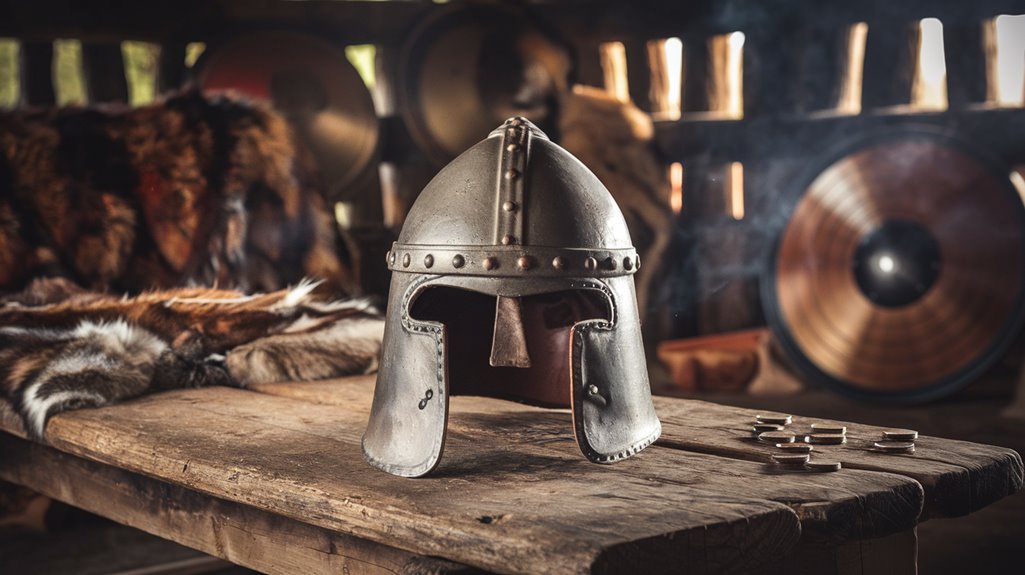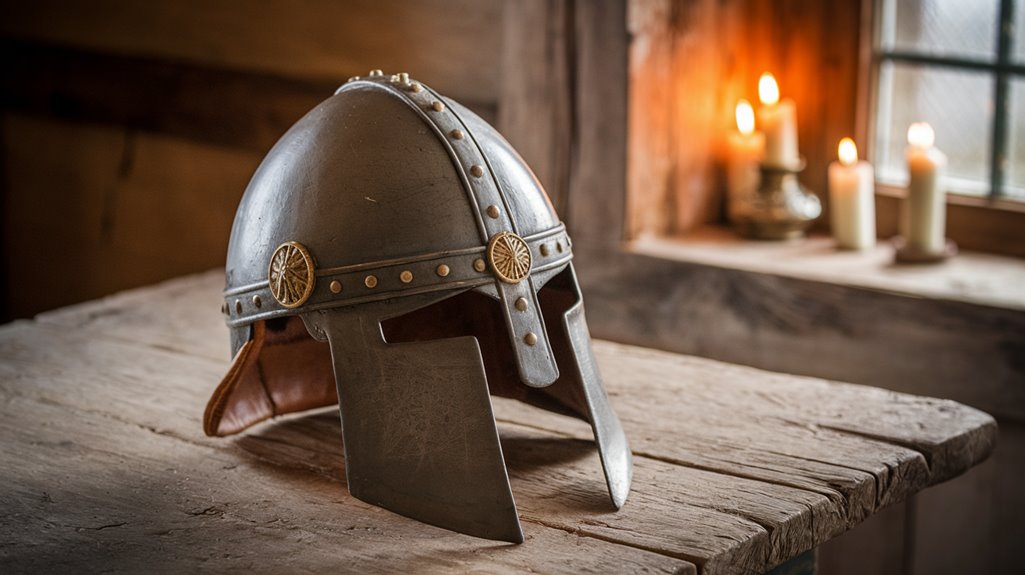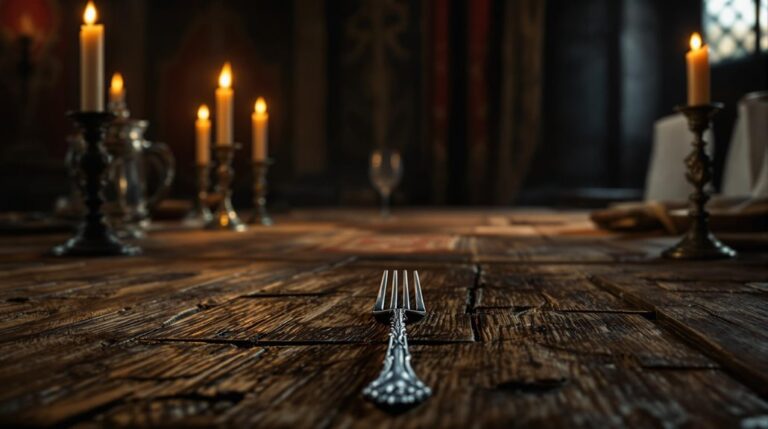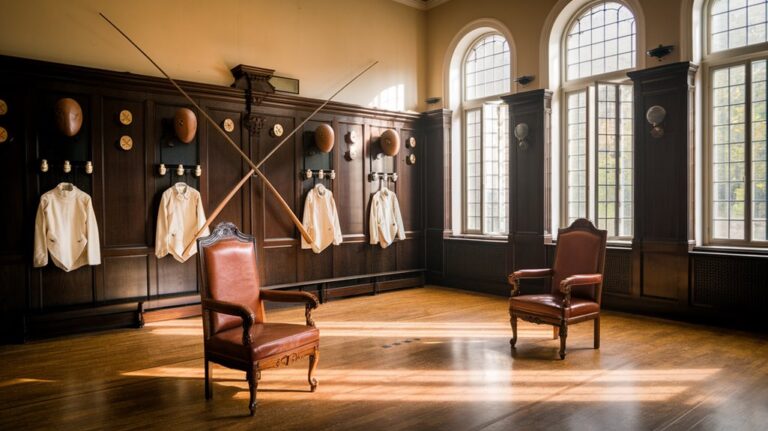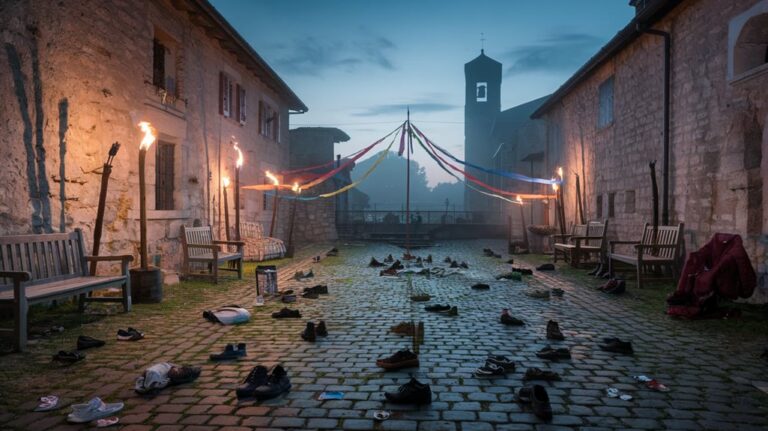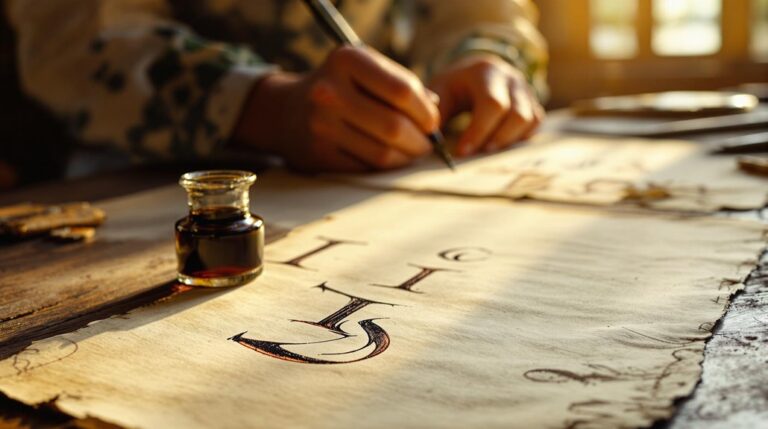Most Vikings Didn’t Wear Horned Helmets
You've probably seen it countless times in movies and cartoons – fierce Viking warriors charging into battle wearing helmets adorned with massive horns. It's an iconic image that's shaped our understanding of Norse culture for generations. But here's the surprise: those famous horned helmets are largely a myth. The real story behind Viking headgear reveals a fascinating tale of historical misunderstandings, artistic license, and how modern entertainment has shaped our view of these ancient warriors.
The Birth of a Historical Myth
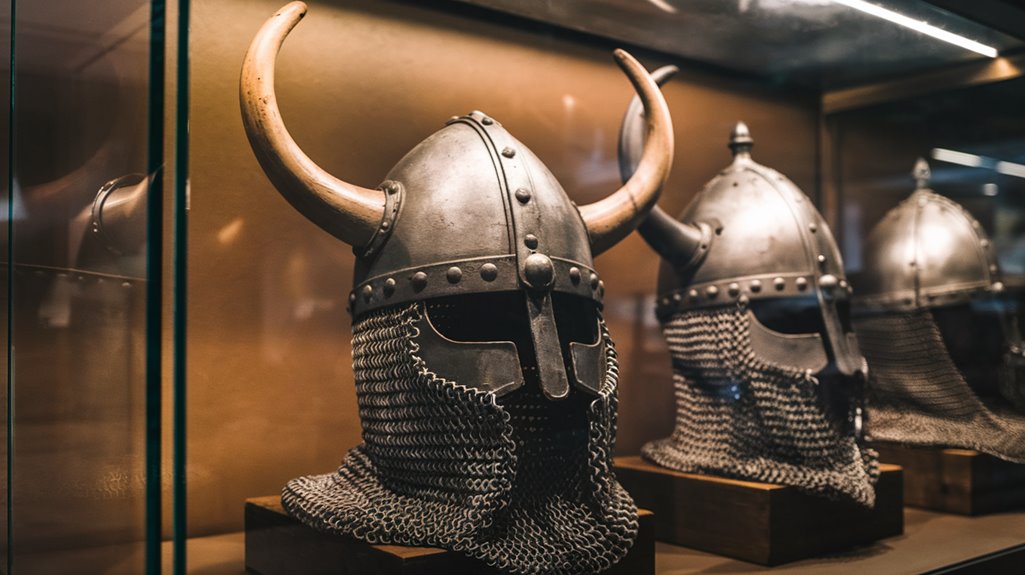
Despite modern depictions of fierce Norse warriors sporting horned helmets, this iconic image originated from artistic imagination rather than historical fact. You can trace this mythical symbolism back to the late 19th century when Scandinavian artists began portraying Vikings with these dramatic headpieces.
The artistic representation gained significant momentum in the 1870s when costume designer Carl Emil Doepler created horned helmets for Viking characters in Richard Wagner's opera "The Ring Cycle."
From there, this inaccurate image spread like wildfire through popular media, with cartoonists and filmmakers enthusiastically adopting the dramatic look.
Interestingly, true horned helmets have been discovered in Viksø, Denmark, dating back to 900 B.C.E., roughly 2,000 years before Viking society emerged.
These ancient helmets were adorned with bird-like features and beaks, showcasing an intricate design that served ceremonial rather than combat purposes.
What's fascinating is that no archaeological evidence supports Vikings wearing horned helmets – they likely wore simple skullcaps that were far more practical for battle.
Yet, this romanticized version has become deeply embedded in our cultural consciousness.
Archaeological Evidence Reveals the Truth
When archaeologists unearthed the famous Viksø helmets in 1942, they discovered a fascinating truth that would challenge the horned Viking helmet myth.
Through radiocarbon dating, they confirmed these helmets were from 900 B.C., nearly two millennia before the Viking Age began.
The archaeological findings tell an even more compelling story. The Viksø helmets' bird of prey symbols and design elements point to Bronze Age influences from the ancient Near East and Sardinia. These helmets were discovered in Danish peat bogs, where ancient peoples often placed ritual offerings.
You'll find it interesting that birch tar residue on the horns suggests they once held feathers or horsehair for ceremonial purposes.
When comparing these to the only confirmed Viking helmet—the hornless Gjermundbu helmet discovered in 1943—the historical accuracy becomes clear: Vikings never wore horned helmets in battle or daily life. The iron-plated helmet represented the true craftsmanship of Viking armor, constructed from four carefully shaped metal plates.
What Real Viking Helmets Looked Like
Real Viking helmets bore little resemblance to the horned versions popularized by modern media.
You'll find that authentic Viking helmet designs were practical and straightforward, typically featuring a simple cap shape with a protective nose guard. Most were crafted from iron or steel, with some incorporating bronze fittings for both function and decoration. The discovery in rich grave sites proves these helmets were symbols of status and wealth.
The helmet construction methods were sophisticated for their time. Craftsmen would forge and shape the metal, joining multiple pieces with sturdy rivets. The higher ranking warriors often wore more ornate designs to display their social status.
They'd often add leather padding for comfort and sometimes include a mail curtain to protect the neck. The best-preserved example, the Gjermundbu helmet, shows how Vikings combined durability with practicality.
While some helmets featured decorative elements like etched designs or bronze accents, they remained focused on battlefield effectiveness rather than theatrical appearance.
The Bronze Age Origins of Horned Helmets
The surprising origins of horned helmets trace back to Denmark's Bronze Age, not the Viking era. In 1942, archaeologists discovered two ornate bronze helmets at Viksø, dating to around 950 BCE. These helmets showcase intricate horned symbolism and ceremonial significance, likely used in religious rituals rather than combat. Modern artistic depictions have incorrectly portrayed these as typical Viking war gear.
The helmets feature distinctive characteristics:
- Curved bronze horns extending from each side
- Bird of prey features including beak and eyes
- Fittings for decorative feathers and horsehair
- Elaborate designs linked to Near Eastern influence
- Symbolic elements representing divine power
You'll find these helmets represent a fascinating cultural exchange between Bronze Age civilizations. Their design reflects trade networks stretching from Scandinavia to the Mediterranean, brought by Phoenician travelers. Evidence suggests the helmets were crafted by eastern Alpine craftsmen.
The helmets served as powerful symbols for religious ceremonies and helped legitimize political leadership in early Scandinavian societies.
How Popular Culture Shaped Our Viking Image
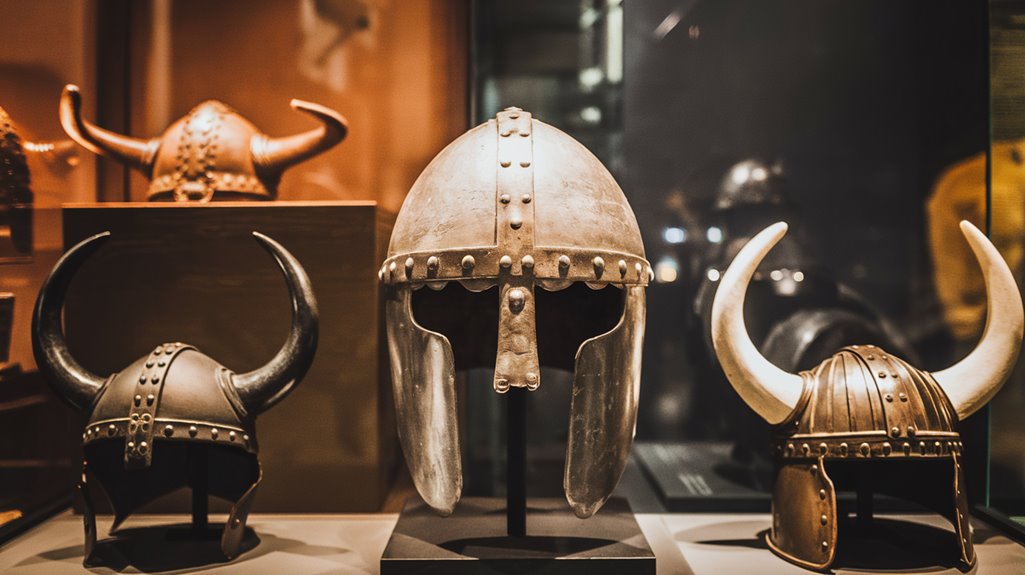
While Bronze Age helmets reflected authentic ceremonial practices, our modern image of Vikings stems from a cultural misunderstanding that began in the 19th century. You can trace these Viking portrayals back to Wagner's operas, where costume designer Carl Emil Doepler created the iconic horned helmets for stage performances in the 1870s. Archaeological findings, including the famous Gjermundbu helmet, prove that real Viking helmets were simple and hornless.
These cultural misconceptions spread rapidly through various media, from Victorian art to modern films and TV shows. While Anglo-American pop culture typically depicts Vikings as savage warriors, Nordic perspectives emphasize their well-ordered societies and complex culture. The success of Marvel's Thor comics in the 1960s further cemented these misconceptions by reimagining Norse gods as superheroes.
You'll find this contrast particularly evident in how different museums present Viking history. Though shows like "Vikings" and recent historical research have begun to challenge these stereotypes, the horned helmet myth remains deeply embedded in popular imagination, demonstrating how difficult it's to correct established historical inaccuracies.

